I got the chance to join Pivot in Crested Butte, Colorado for two test rides aboard the new Shuttle AM. I came home pretty impressed with Bosch’s motor and battery, not to mention the stable geometry and capable build spec of the Shuttle AM Pro model I rode.
2024 Pivot Shuttle AM Pro – Basic Specs:
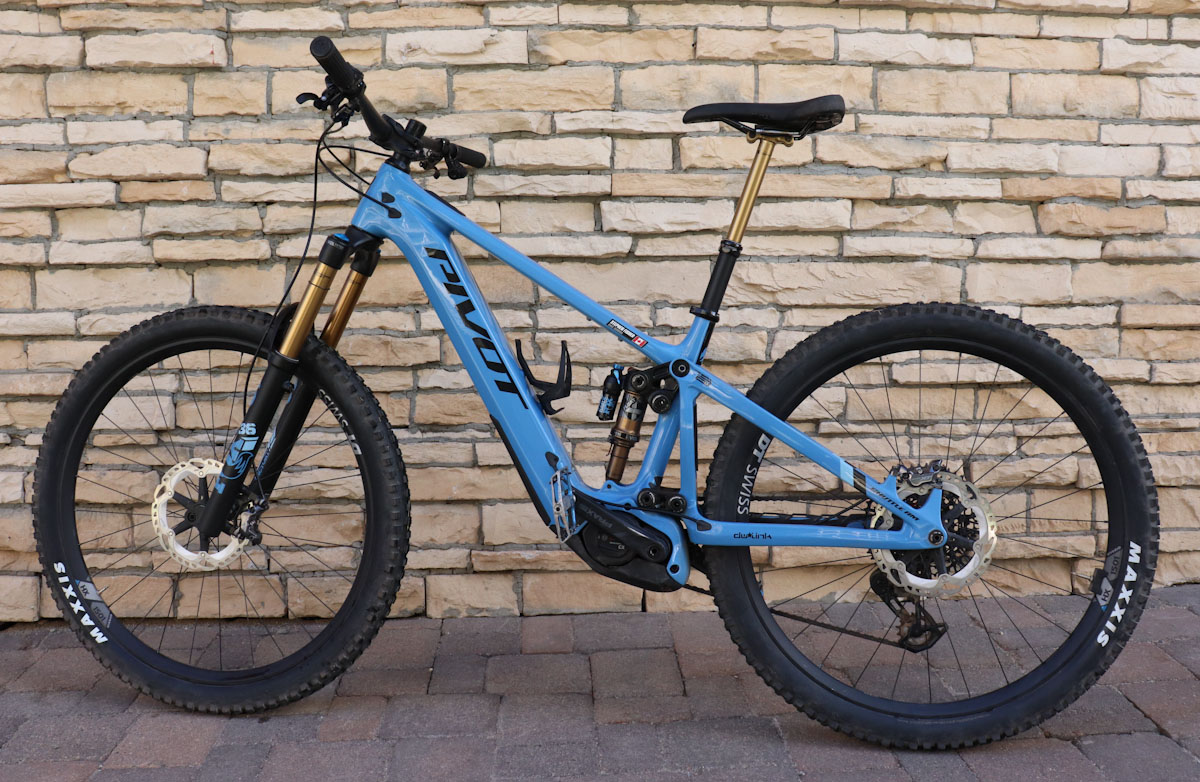
You can find all the details of the new Pivot Shuttle AM lineup in my launch article, but here’s a quick rundown on the bike: The Shuttle AM was designed to be a well-rounded ‘all-mountain’ eMTB. Its full carbon frame’s flex pattern is identical to Pivot’s Switchblade MTB, although geometry is not the same between the two bikes. The Shuttle AM’s slack head angle and longer chainstays lean this bike toward the more aggressive side of the all-mountain class.
The Shuttle AM offers 148mm of rear travel controlled by a DW Link suspension platform, and all models come with 160mm forks. The bikes roll on 29” wheels, but can be converted to mixed-wheel setups if desired.
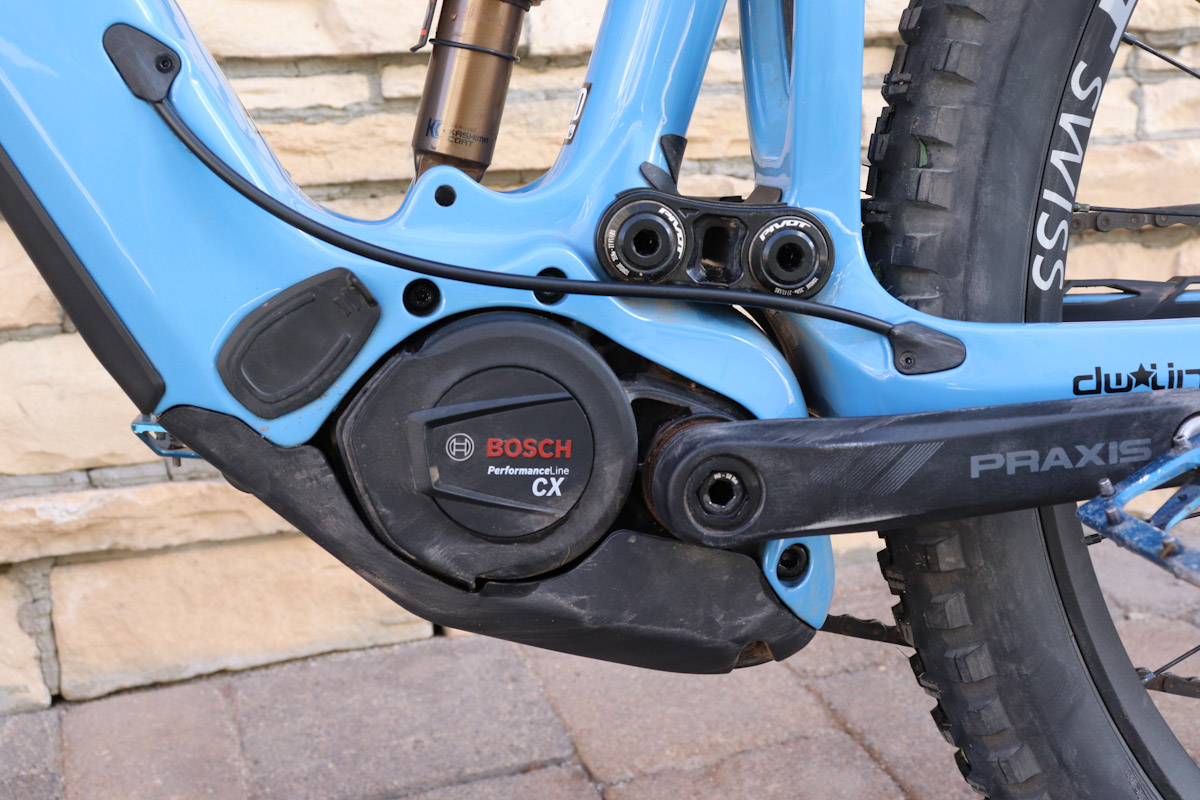
Drawn in by their wireless remote and wheel sensor, top tube display, and power delivery, Pivot decided to partner with Bosch for the Shuttle AM’s power plants. The lineup features the Performance Line CX motor on two models and the Performance CX Race motor on the top-spec Team build. The Pro model I rode had Bosch’s Performance Line CX motor and Powertube 750wh battery.
The Shuttle AM Pro model’s weight is listed at 49lbs.
Ride Impressions – Suspension:

Our first demo ride started with some dirt road riding, then continued up a smooth, dusty singletrack for a while. Closer to the top we came through a forested section with some uphill rootbeds (and still plenty of dust). I climbed with the Fox Float X Factory rear shock in firm mode, and found the bike pretty supportive against pedalling efforts. Pivot says the DW linkage is ideal for eMTBs as it fights squat effectively, especially as the motor’s power kicks in. I would agree the linkage was an efficient climber, yet it was happy to absorb bumps too.
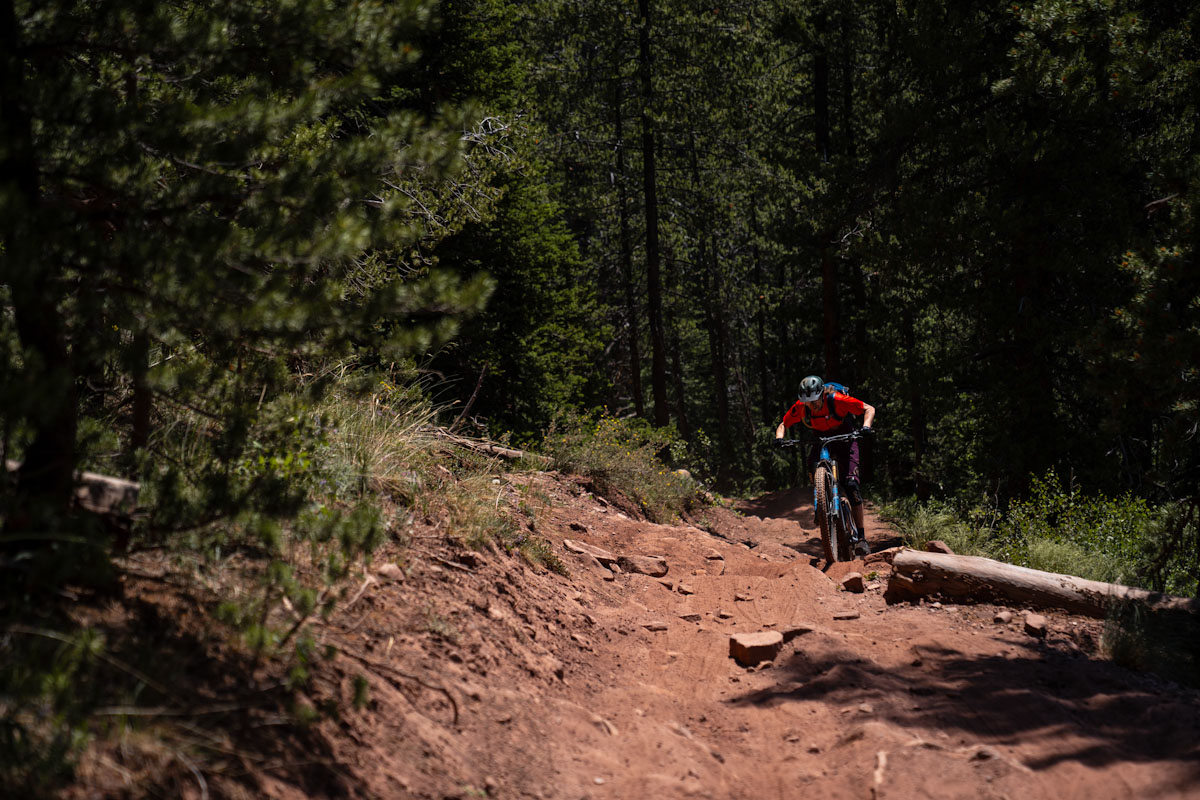
In firm mode, I still found the rear shock was willing to dive into its travel when required by the terrain. I had dipped around 75% into the travel by the top of the climb, which did provide good traction. Pivot is using small volume spacers in the rear shocks for the 2024 AMs, and the shock did feel pretty linear through most of its travel. Even on those dusty roots the rear wheel clung to almost everything; I only slipped a wheel once during this lengthy climb (when I got stuck in a bad line). The climbs on our second ride were mostly smooth but had a few nasty rocky uphills (as seen above) and the rear shock handled them similarly to day one.
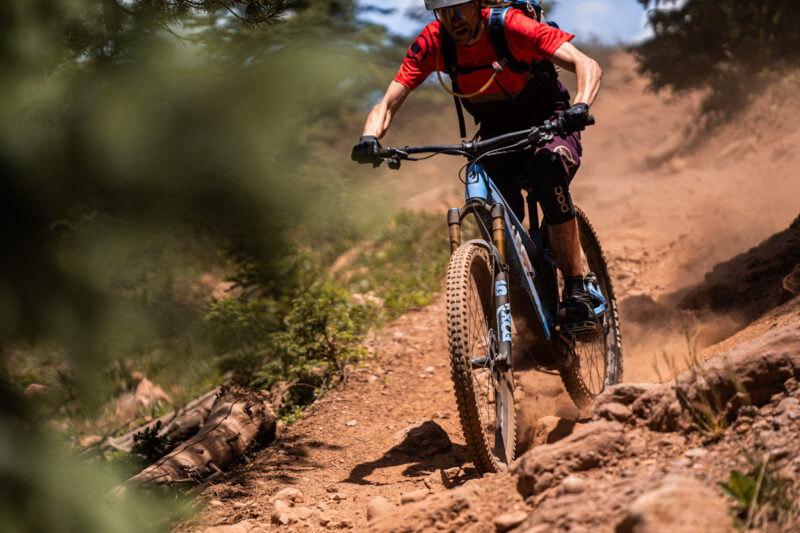
My suspension setup was definitely within the correct range, as I was not quite bottoming out on the descents. The first day’s downhill sections only had a few rough patches, yet I still used most of the shock’s travel. While mostly linear, the stroke does ramp up nicely at the end; our last descent was a rough, rocky one that challenged the bike’s 148mm travel, but I still didn’t harshly bottom out at any point. The Shuttle AM’s bottom-out resistance helped the bike float over the rough stuff and save a bit of travel for any significantly hard impacts. The Shuttle AM felt well-supported in the corners, and despite the eMTB’s inherent weight I did manage to pop it nicely off a few bumps.
Geometry:


First off, there is a flip-chip in the Shuttle AM’s rear linkage, and our demo bikes were all set up in the ‘low’ position so all numbers listed here refer to that setting. Moving into the ‘high’ setting raises the BB by 5mm, and steepens the head and seat tube angles by 0.4°. See the charts above for all geometry figures.
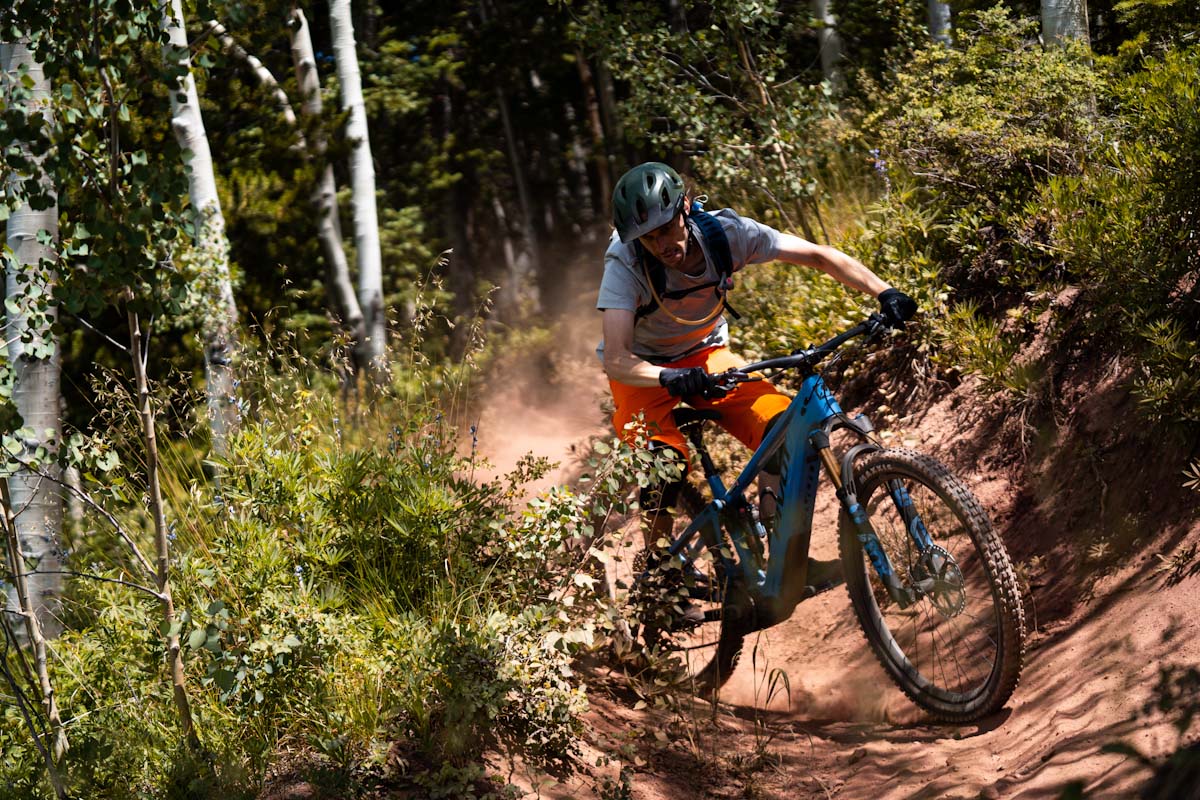
At 5’10”, I was immediately comfortable with the medium frame’s 461mm reach. It’s long enough to provide a roomy front end while leaving a little bend in my arms. I liked the Shuttle AM’s steering angle of 64.1°, as I don’t find slack steering angles much of a penalty on climbs and they feel very stable on descents. The chainstays are the same for all frame sizes at 444mm; I do like the boost in climbing traction from longer rear ends, but the trade-off is I didn’t find the bike amazingly agile in the tight switchbacks we descended.
The seat tube angle of 76.4° is in-line with today’s norms and left me in a comfortable position for powerful pedaling. I’m on the taller side for riding a medium frame, but as Pivot intended the Shuttle AM’s standover height was easily low enough for me. The frame’s stack height isn’t particularly low and my demo bike had one spacer under the stem, so it was a comfortable setup for our lengthy rides. A BB height of 345mm isn’t super low, but that’s ideal for an eMTB; still, I did tag my cranks and pedals several times during our second ride’s climbs.
Drive System:
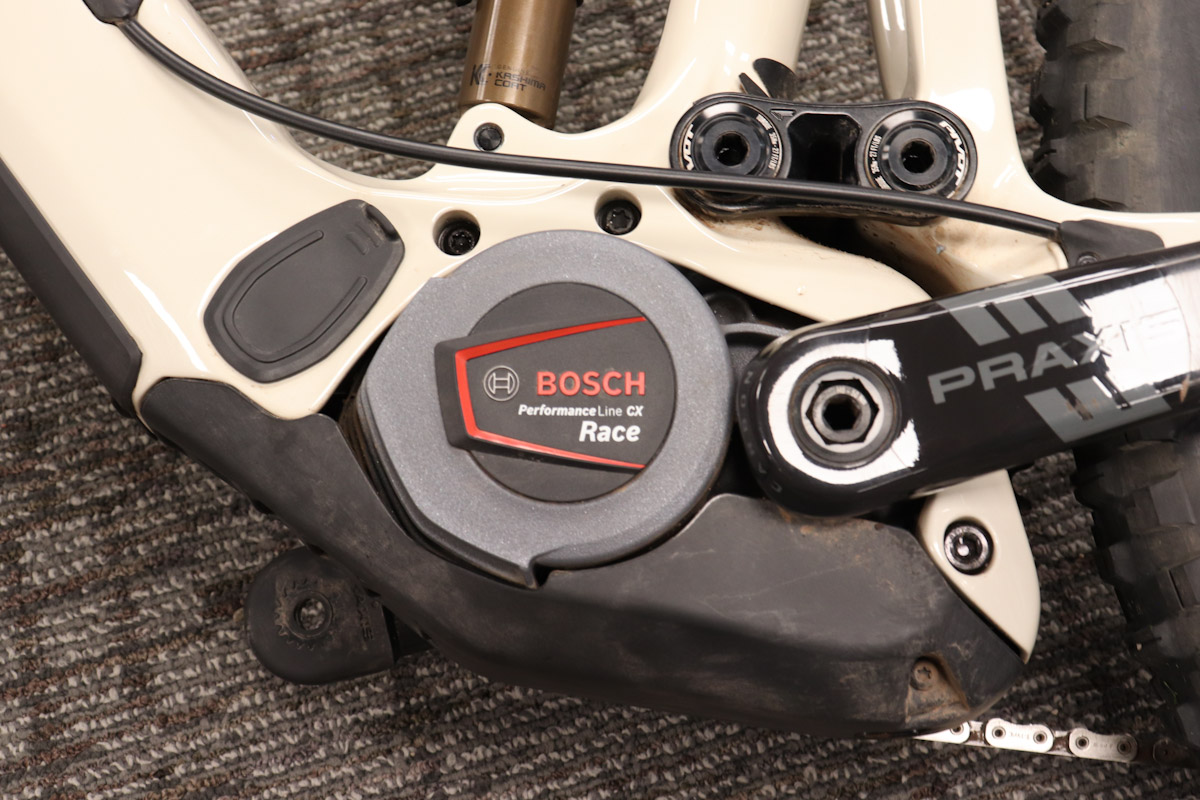
It’s been a while since I rode a very early model Bosch drive system, and it’s clear they’ve come a long way. The Shuttle AM’s Performance Line CX motor was acutely sensitive to torque inputs, and provides plenty of power (85Nm max) in its Boost and self-regulating ‘eMTB’ modes. I was pretty impressed with the eMTB mode, as it proved intuitive and responsive. With a hard push on the pedals, extra power comes on within about a second, but when you’re traversing along with ease it reduces its output without leaving you working too hard. I didn’t toy with the lower power settings – we had two solid rides to finish, and I’ve just recovered from a leg injury. I also wanted to test the 750wh battery’s run time, which turned out to be impressive.
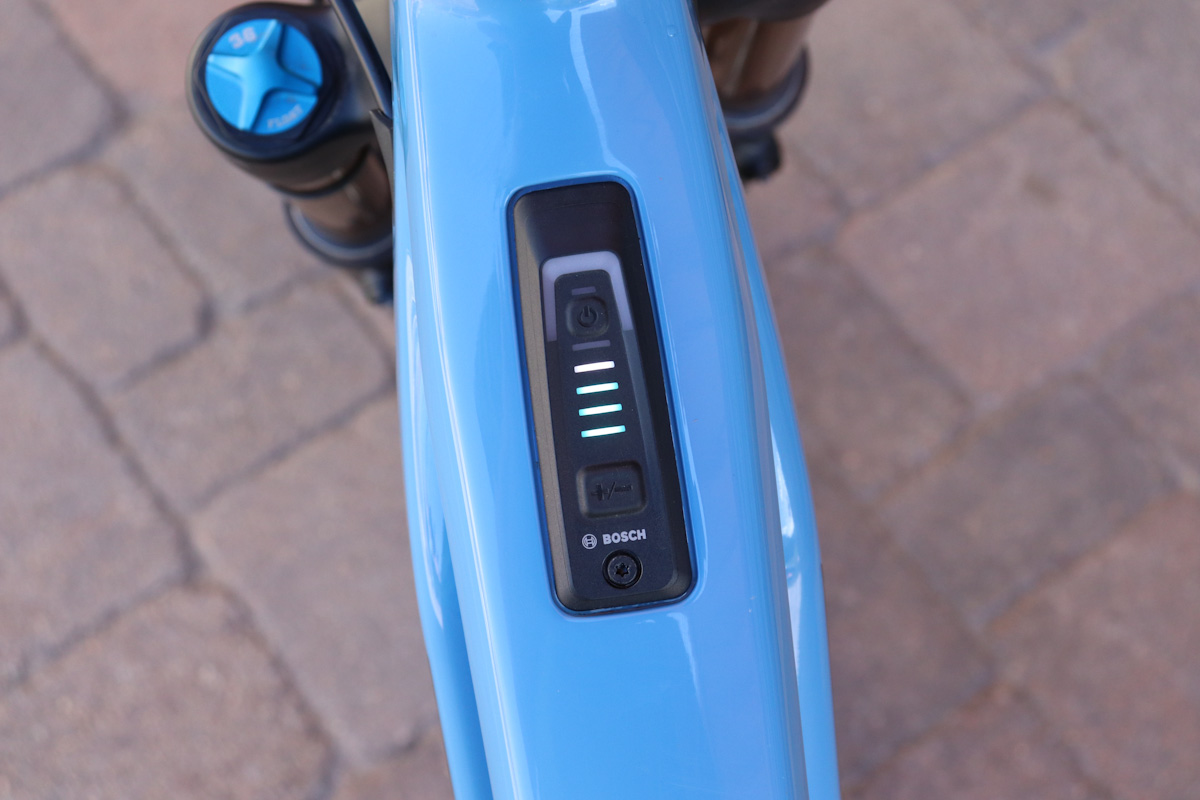
On our first ride, I only used one out of five bars of battery life, going between eMTB mode and using Boost for a few steep pitches along the way. This ride was about 3hrs long including several photo stops and a short break at the top, and we covered roughly 3600ft elevation. On our second ride, I was generous with the Boost, using it probably 40% of the time, and staying in eMTB mode for the remainder. After about 3800ft of elevation and over two hours of ride time, I got the bike down to two bars of battery life. I should note after getting down to one bar, the bike then gives you two ‘low power’ bars lit up in red, so I wasn’t even close to running out of juice.
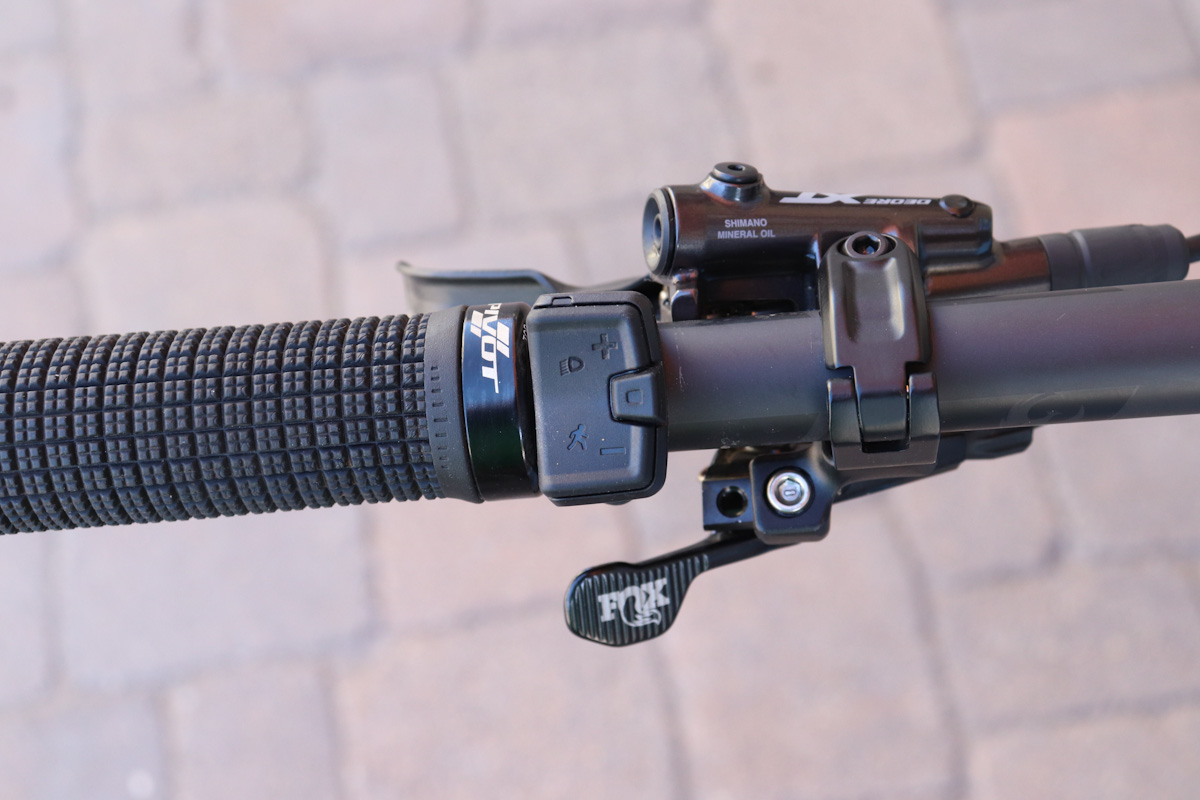
I found Bosch’s compact wireless remote very ergonomic and easy to use. The top tube display is easy to check, and it’s pretty easy to see the different colors for each mode (red = low, blue = med, purple = emtb, orange = boost ). One thing you may not notice right away is that each power bar (shown in blue) turns white before shutting off; it’s not blatantly obvious if you’re unaware, but once someone mentioned it I could see it easily.
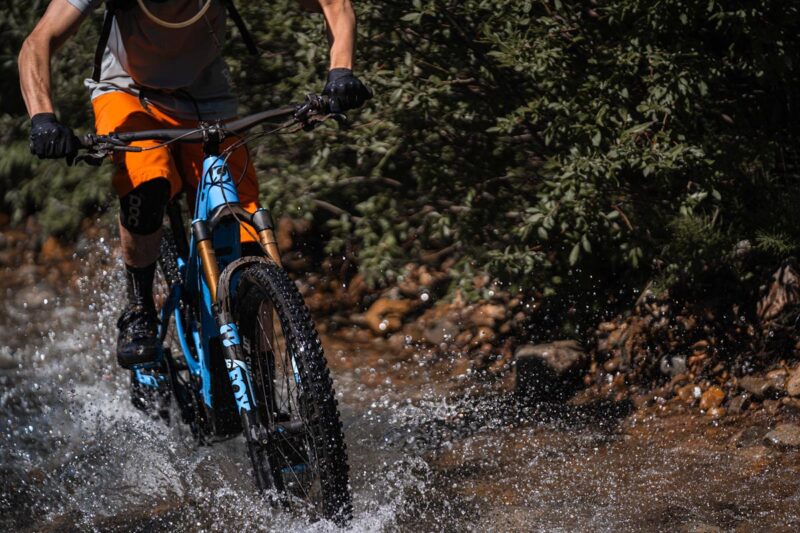
The motors were fairly quiet while operating in any power mode, and only made some extra noise after surviving a quick submerge as we crossed a river deeper than our BB’s! The motors are not completely waterproof, but apparently, they can take a short swim. I noticed the drive system shuts down automatically after the bike sits for 10 minutes, which is great for preserving power.
Components:

Finally, some quick notes on components: Throughout both rides, I only experienced one rough shift from the SRAM XO T-Type transmission, and it was under considerable load while I tried to shoot up a sudden incline.
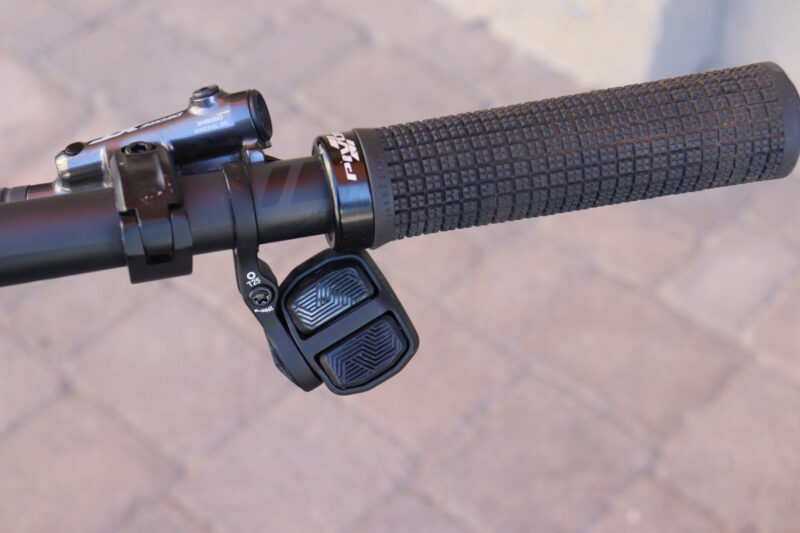
Also, while I didn’t love the position of the shifter pod on the Yeti SB135 I recently tested, that bike came with a matchmaker style shifter mount. The Shuttle AM came with SRAM’s Infinity clamp, and it got the shift pod into a position I was much happier with.

Pivot stuck with Shimano for brakes, and their 4-piston XT calipers with 203mm rotors offered more than adequate power for this eMTB. Long travel dropper posts (175mm for the medium frame) should keep anyone happy, and Pivot sticks with tried-and-true Maxxis Minion 3C EXO tires front and rear. A Pivot carbon handlebar is a nice touch, with the small/medium frames running 780mm widths and larger sizes going to 800mm. Throughout both rides, I had no functional issues with any of the Shuttle AM Pro’s components.

The 2024 Shuttle AM Pro is available at Pivot dealers as of today. MSRP is $11,799, and frame color options are Blue Neptune or Mojave Willow Green.

